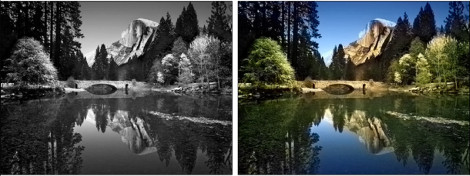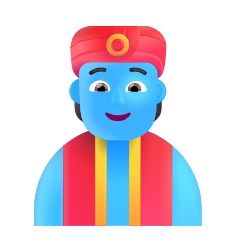I got another great academic publication to present to you – and this publication also comes with an online interactive website for you to use to your heart’s content. The paper is from the field of image colourisation.
Image colourisation (or ‘colorization’ for our US readers :P) is the act of taking a black and white photo and converting it to colour. Currently, this is a tedious, manual process usually performed in Photoshop, that can typically take up to a month for a single black and white photo. But the results can be astounding. Just take a look at the following video illustrating this process to give you an idea of how laborious but amazing image colourisation can be:
Up to a month to do that for each image!? That’s a long time, right?
But then came along some researchers from the University of California in Berkeley who decided to throw some deep learning and computer vision at the task. Their work, published at the European Conference on Computer Vision in 2016, has produced a fully automatic image colourisation algorithm that creates vibrant and realistic colourisations in seconds.
Their results truly are astounding. Here are some examples:
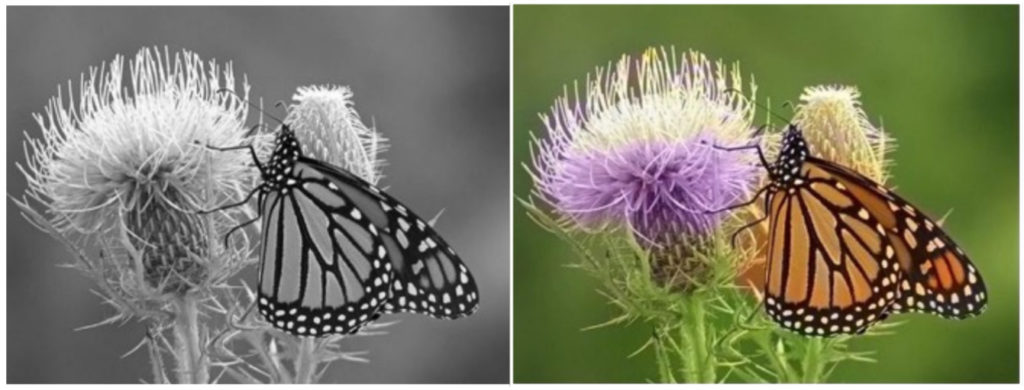
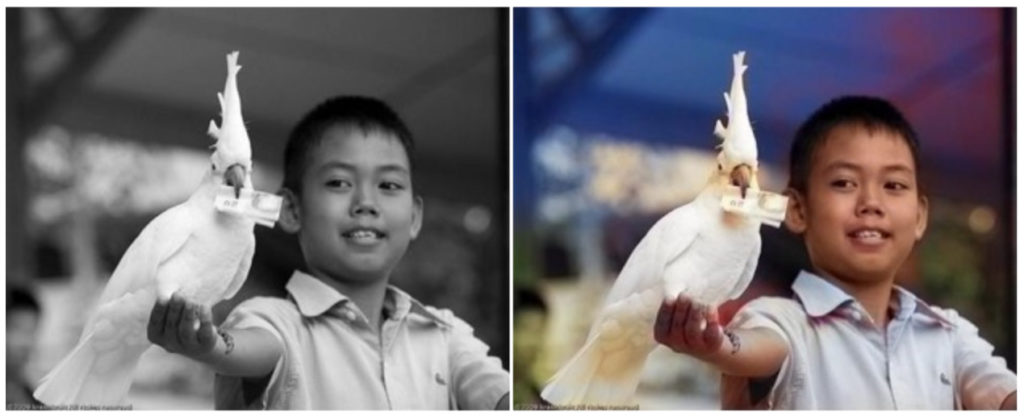
Not bad, hey? Remember, this is a fully automatic solution that is only given a black and white photo as input.
How about really old monochrome photographs? Here is one from 1936:
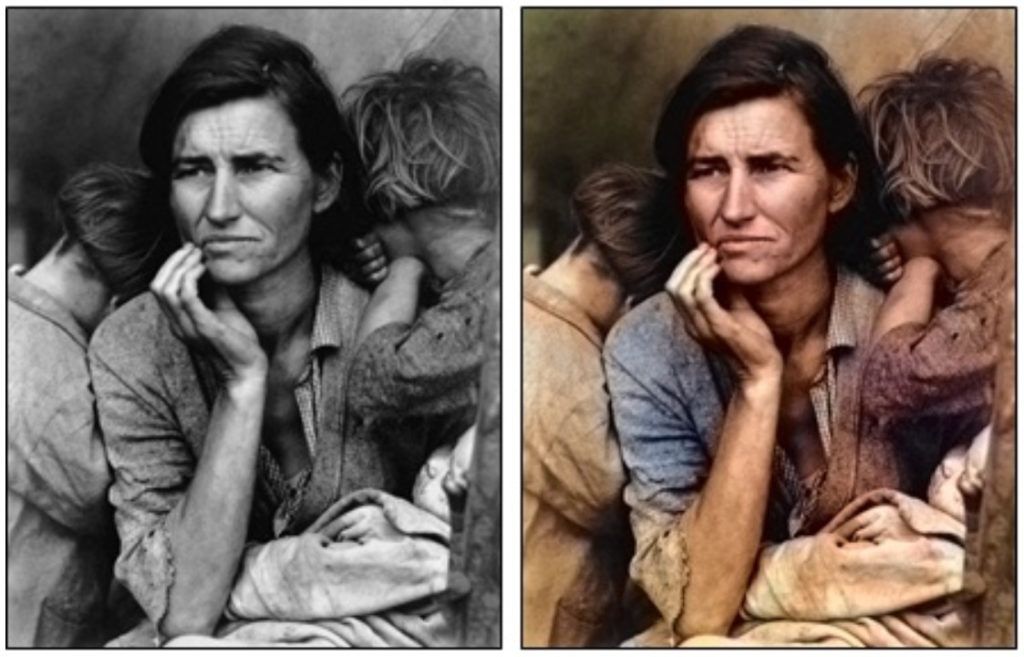
And here’s an old one of Marilyn Monroe:
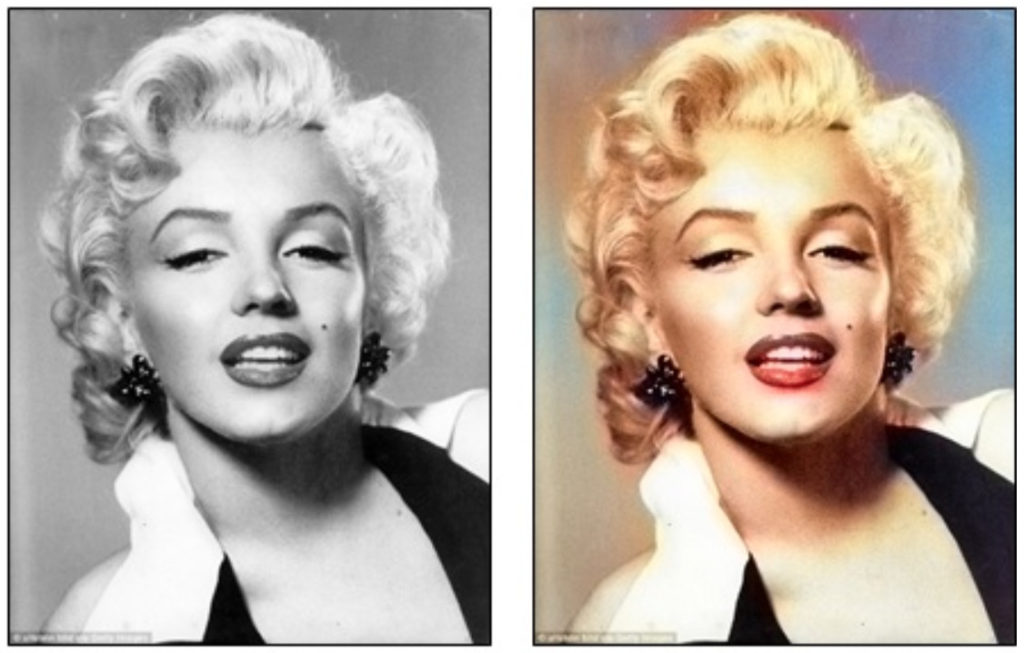
Quite remarkable. For more example images, see the official project page (where you can also download the code).
How did the authors manage to get such good results? It’s obvious that deep learning (DL) was used as part of the solution. Why is it obvious? Because DL is ubiquitous nowadays – and considering the difficulty of the task, no other solution is going to come near. Indeed, the authors report that their results are significantly better than previous solutions.
What is intuitive is how they implemented their solution. One might choose to go down the standard route of designing a neural network that maps a black and white image directly to a colour image (see my previous post for an example of this). But this idea will not work here. The reason for it is that similar objects can have very different colours.
Let’s take apples as an example to explain this. Consider an image dataset that has four pictures of an apple: 2 pictures showing a yellow apple and 2 showing a red one. A standard neural network solution that just maps black and white apples to colour apples will calculate the average colour of apples in the dataset and colour the black and white photo this way. So, 2 yellow + 2 red apples will give you an average colour of orange. Hence, all apples will be coloured orange because this is the way the dataset is being interpreted. The authors report that going down this path will produce very desaturated (bland) results.
So, their idea was to instead calculate what the probability is of each pixel being a particular colour. In other words, each pixel in a black and white image has a list of percentages calculated that represent the probability of that particular pixel being each specific colour. That’s a long list of colour percentages for every pixel! The final colour of the pixel is then chosen from the top candidates on this list.
Going back to our apples example, the neural network would tell us that pixels belonging to the apple in the image would have a 50% probability of being yellow and 50% probability of being red (because our dataset consists of only red and yellow apples). We would then choose either of these two colours – orange would never make an appearance.
As is usually the case, ImageNet with its 1.3 million images (cf. this previous blog post that describes ImageNet) is used to train the neural network. Because of the large array of objects in ImageNet, the neural network can hence learn to colour many, many scenes in the amazing way that it does.
What is quite neat is that the authors have also set up a website where you can upload your own black and white photos to be converted by their algorithm into colour. Try it out yourself – especially if you have old photos that you have always wanted to colourise.
Ah, computer vision wins again. What a great area in which to be working and researching.
To be informed when new content like this is posted, subscribe to the mailing list:
